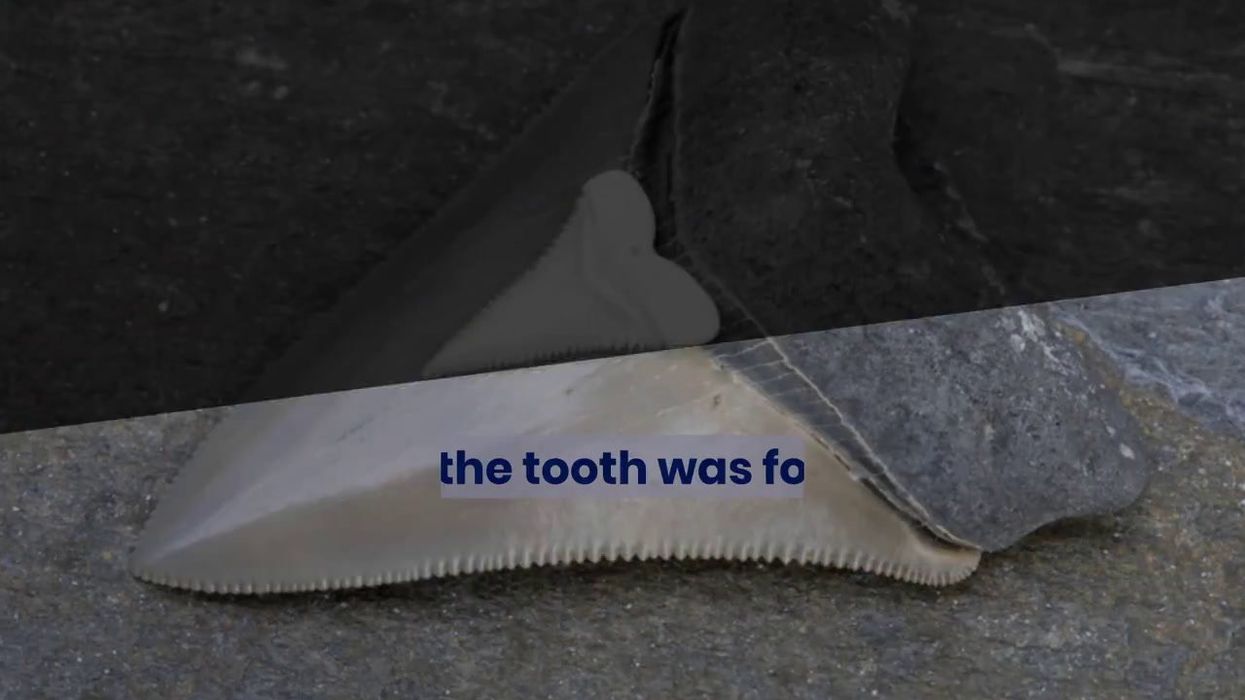Ellie Abraham
Oct 02, 2023
Megalodon Tooth Found In Titanic Wreckage
unbranded - Newsworthy / VideoElephant
Divers in Mexico have discovered Megalodon teeth in a flooded inland cave and the findings have confirmed scientific beliefs.
Megalodons were absolutely gigantic prehistoric sharks that reached sizes of up to 50 feet long. They dominated the oceans before going extinct around 3.6 million years ago.
Scientists are interested in studying fossils of the huge sea creature, with the animal's teeth proving the most abundant type of fossil to be found today.
Teeth fossils were found in Mexico by speleologist (cave specialist) and photographer Kay Nicte Vilchis Zapata and fellow speleologist Erick Sosa Rodriguez while diving in a newly discovered sinkhole in Cholul in 2019.
The cenote is 400 meters long and 28 meters deep and located inside were fifteen teeth fossils from various shark species. They also discovered human remains and a vertebrae fossil that potentially belongs to an ancient species.
A total of 13 of the 15 teeth fossils belonged to three different species of shark – one being the megalodon (Carcharocles megalodon), while the other two species were the mackerel shark (Isurus oxyrinchus) and the sawshark (Pristiophoridae).
Zapata told local media at the time: “We were looking at the wall and suddenly I saw a little something, I went closer and I saw that it was a tooth, that was the first and apparently it belonged to a sawshark.”
Experts believe the geological timescale of the megalodon teeth lies anywhere between 2.5 million to 5 million years old.
Speleologist Sosa Rodriguez said: “It is just proof of what scientists have already studied and written about; what kind of wildlife lived here millions of years ago when this was part of the sea.”
Scientists have suggested that the megalodon’s warm body temperature may have been the reason for its extinction.
There is some thought that the megalodon was able to maintain a body temperature around 7 degrees centigrade warmer than the water around it, but ultimately this may have been its downfall.
Randy Flores, a UCLA doctoral student and fellow of the Centre for Diverse Leadership in Science, explained: “Maintaining an energy level that would allow for megalodon’s elevated body temperature would require a voracious appetite that may not have been sustainable in a time of changing marine ecosystem balances when it may have even had to compete against newcomers such as the great white shark.”
Sign up to our free Indy100 weekly newsletter
Have your say in our news democracy. Click the upvote icon at the top of the page to help raise this article through the indy100 rankings.
Top 100
The Conversation (0)














